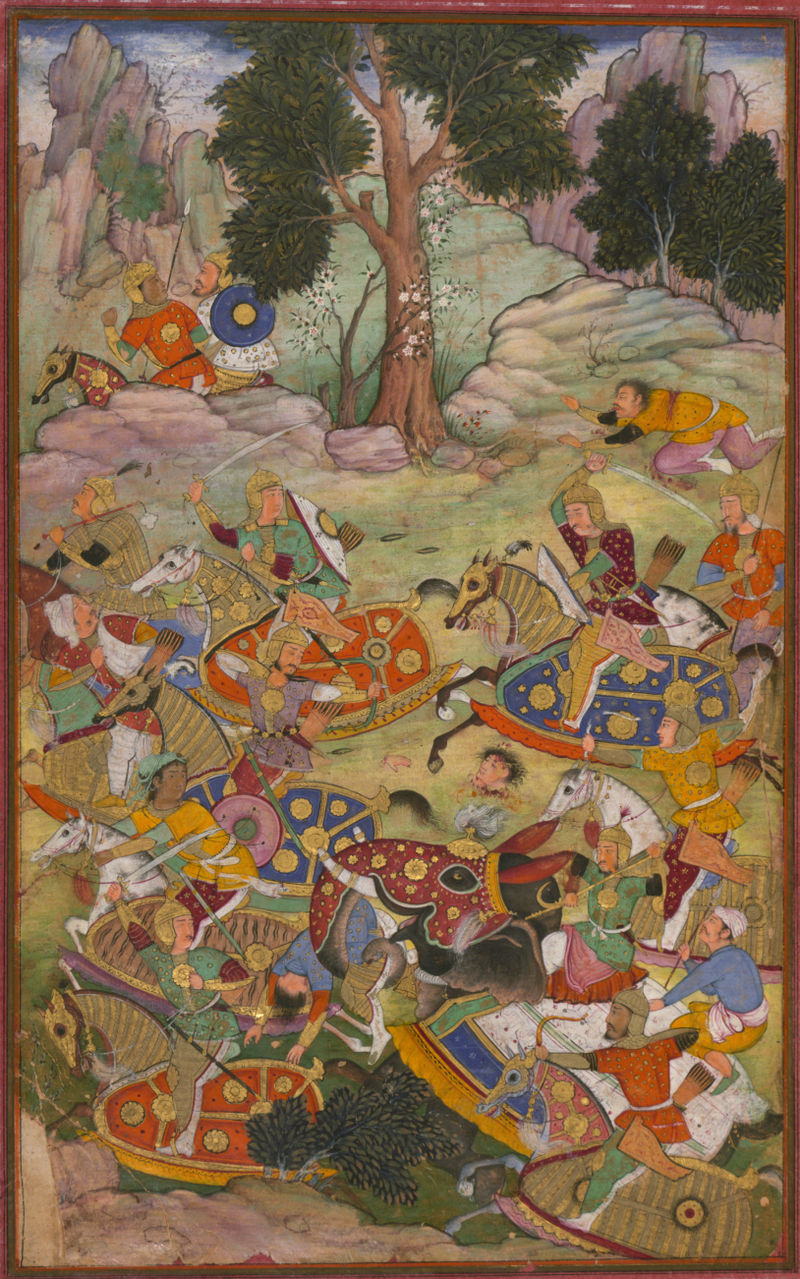
“From the year . . . [1504], when Kabul was conquered, until this date [1526] I had craved Hindustan. Sometimes because my begs (high-ranking officers) had poor opinions, and sometimes because my brothers lacked cooperation, the Hindustan campaign had not been possible and the realm had not been conquered.”
— Emperor Babur, on conquering India, in his memoirs
On 21st April 1526, happened the first battle of Panipat (in present day Haryana) between Babur and Ibrahim Lodi (Delhi Sultanate). This battle ultimately led to the establishment of Mughal empire, one of the biggest empires in the history. Eventually, this battle is historically very significant. Let us have retrospect of the battle.
Who was Babur:
Roots of Babur's family are traced back to other Asian conquerors. His father was a descendant of Timur while his mother's family had its roots back to Genghis Khan. At the age of 11, Babur's father died and he became the ruler of Fergana.
Why did Babur come:
Babur faced the rebellion from his own relatives. He conquered Samarkand but lost the city of Fergana. In his attempt to recapture Fergana, he lost his control over Samarkand. He made several attempts to establish his control over parts of Central Asia, but he couldn't get much success.
After losing Samarkand for the third time, he turned his attention to India. At that time, North-India was ruled by Ibrahim Lodi of Afgan Lodi dynasty. In 1524, Daulat Khan Lodi, a rebel of Lodi dynasty and governor of Lahore, invited Babur to overthrow Ibrahim Lodi.

The Battle:
Babur's army consisted 13,000 to 15,000 soldiers while Ibrahim's army consisted 30,000 to 40,000 soldiers (some sources cite this number as 1,00,000) and 1,000 elephants. But this numerical superiority of Ibrahim Lodi was compensated by the artillery of Babur.
In the ultimate battle, Babur won a decisive victory with the loss of around 4,000 of his own soldiers while killing 15,000 to 16,000 enemy soldiers (some sources cite this number as 40,000 or 50,000). Ibrahim Lodi himself died in the battle.
Why did Babur win:
Despite the numerical superiority of Lodi's forces. Babur had a decisive win in the battle. What were the factors playing the crucial role in the battle? The answer is the Technology and Tactics. Let us see how.
- Technology
Babur made the use of cannons. Ibrahim was relying on sheer numbers and elephants. Using tulughma formation (discussed in next section), Babur trapped Lodi's army and then used the cannons to great effect. Elephants had never heard such a loud and terrible noise. They turned around and ran through their own lines crushing Lodi's soldiers.
Babur made successful use of gunpowder, because of which Mughal empire is known as one of the three Gunpowder Empires (Ottoman and Safavid being the other two). - Tactics
Ibrahim Lodi was no tactician. On the contrary, Babur employed two tactics unfamiliar to Lodi which turned the tide of battle. The first one was tulughma formation which meant dividing the forces into various units viz. the Left, the Right, and the Centre. Left and Right units were further divided into forward and rear units. Their primary task was to surround the enemy forces and drive them towards the Centre unit, where Babur had arrayed his cannons.
The second tactical innovation was the use of carts, called Araba. Babur shielded his artillery forces behind the row of carts. Babur ordered his men to gather up as many carts as possible. There were around 700 carts which were then tied together with leather rope. Enough space was left between each pair of carts to place five or six mantlets. Babur's matchlock men were posted behind the mantlets. This tactic prevented enemy forces to attack the artillerymen.
Supposedly, Babur borrowed these tactics from Ottoman Turks.
After carefully deploying technology with tactics, the next task for Babur was to provoke Ibrahim Lodi to attack. Both armies forced each other weeks before the battle and Babur made several attempts to provoke the battle. Finally, on 21st April, the Ibrahim Lodi moved to attack Babur's lines. Babur's plan worked perfectly and he won the battle by noon.
Repercussions of the battle:
- The foremost consequence of the battle was that it led the foundation of the Mughal empire which later became one of the biggest empire in the world.
- It shifted the political interests of Babur from Kabul and Central Asia to Agra and India.
- The battle of Panipat initiated the use of artillery in India. Till then India was not familiar with gunpowder. For the first time it was used on the Indian plains and since then it had been used in many important battles.
- Tulghma strategy became popular in India after its successful use by Babur. Almost all Indian Rulers later on started adopting the policy of keeping a reserve army. The Indian Rulers were greatly impressed by the swiftness and movability of horses and gradually the place of elephants was taken by horses in the army.
- It gave birth to the new struggles. As Satish Chandra writes in ‘History of Medieval India’: “In north India, Babur smashed the power of the Lodis and the Rajput confederacy led by Rana Sanga. Thereby, he destroyed the balance of power in the area. This was a long step towards the establishment of an all-India empire”
- Even from the cultural point of view, establishment of Mughal Empire amalgamated the Indian culture and Central Asian culture.
Overall battle of Panipat had long-term effects on Indian history. And this is what makes it one of the most important battle in the history of India.
References:
References:
- http://www.historyofwar.org/articles/battles_panipat_first.html
- https://en.wikipedia.org/wiki/First_Battle_of_Panipat
- http://asianhistory.about.com/od/warsinasia/a/FirstbattleofPanipat.htm
- http://www.mapsofindia.com/on-this-day/21-april-1526-the-first-battle-of-panipat-was-fought
- http://blog.mapsofindia.com/india/the-first-battle-of-panipat-the-beginning-of-the-mughal-empire-in-india/
- http://www.preservearticles.com/2012030925935/effects-of-first-battle-of-panipat.html